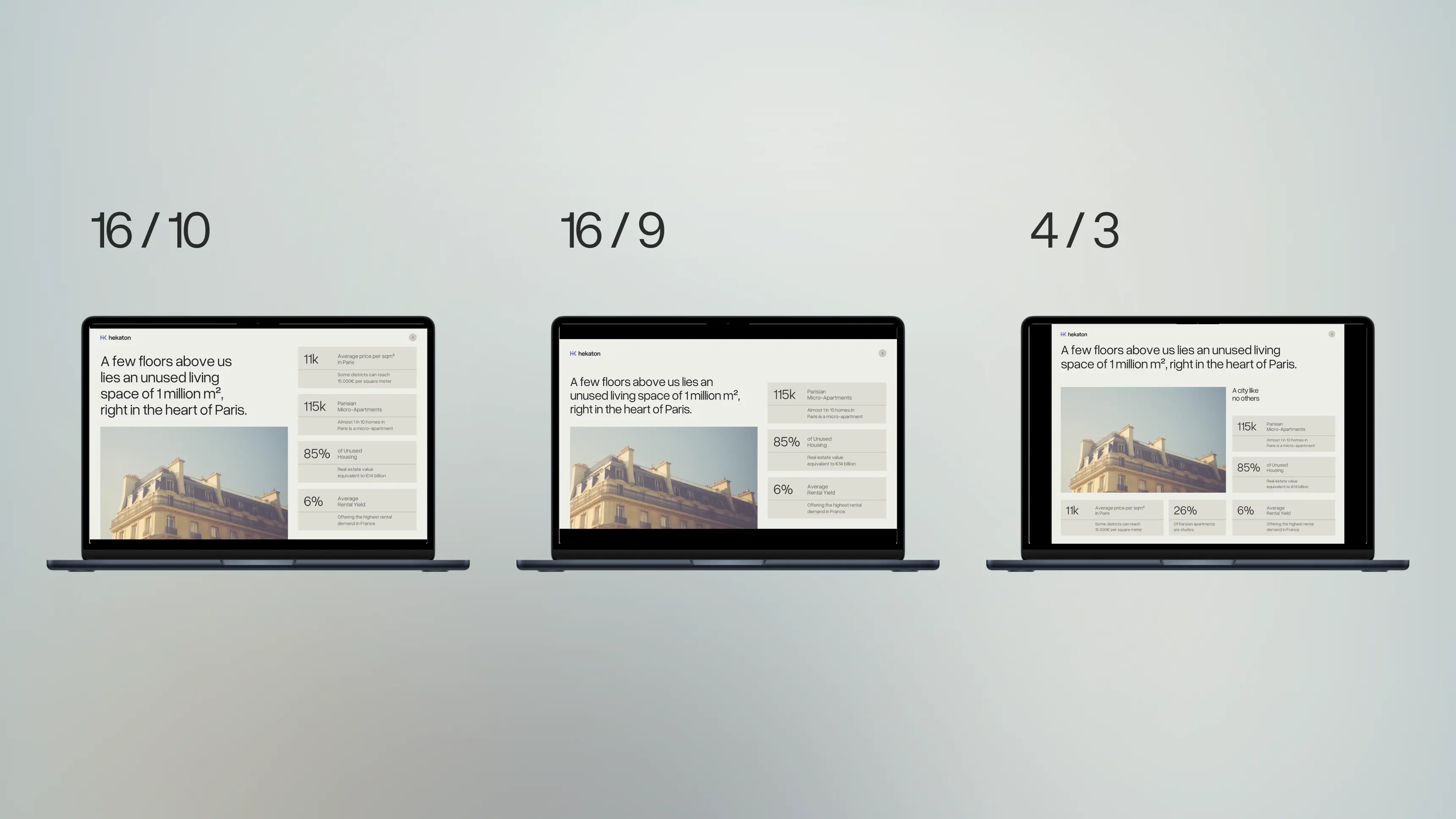How to switch from portrait to landscape or vice versa on PowerPoint
Learn to go from 4/3 to 16/9
Author
Gaëtan Spiga
Updated on
February 21, 2025
Created on
January 28, 2025
Category
Tutorials


In this article, we'll show you how to change the orientation of the slides in your PowerPoint presentations, from portrait to landscape and vice versa. You will also learn how to adapt the content of your slides to these orientation changes. Follow these simple steps to master layout techniques.
Choosing the initial orientation of the presentation
Before you start creating your PowerPoint presentation, it's important to define the initial orientation of your slides. This will allow you to more effectively design the content of your slides according to the space available.
To choose the initial orientation of your presentation, start by opening PowerPoint and creating a new presentation, then select the tab ” Creation” in the ribbon menu. In the zone ” Page size”, you will find two options: Portrait and Landscape. Select the one that best fits your project.

Portrait mode
Portrait mode is generally used for documents intended for printing purposes, such as reports or briefs. It is particularly suitable for presenting large amounts of text, as it offers more vertical space for reading. You can therefore choose to adapt your presentations to an A4 format in this specific case.
Landscape mode
Landscape mode is ideal for presentations that are intended to be displayed on a computer, tablet or for events. The majority of devices have a 16:9 or 16:10 screen ratio. Landscape formats are intended for screens in order to take up as much space as possible.
Change the orientation of an existing presentation
We recommend changing the orientation before starting the project. However, if you need to change the orientation of a document downstream, simply follow the instructions above. Once the modification has been made, a window invites you to adapt the content to the new dimensions.

Enlarge or guarantee the fit
When you change the focus of your existing presentation, you have both options. Depending on your content, it may be more interesting to apply one method over the other:
Expand: The content maintains the layout of the previous orientation. Which takes it out of the layout.

Guarantee the fit: The content adapts to the new format while maintaining the same layout.

In both cases, the layout will have to be reworked. This is why we recommend adapting it to the desired dimensions as soon as the presentation is created. Be careful, if you have images embedded in the slide master, they will be stretched or compressed.
Google Slides
If your Powerpoint presentation is for Google Slides, be aware that the dimensions are not the same between these two tools. It may therefore be interesting to modify the dimensions to avoid unpleasant surprises such as line indents or discrepancies.
When creating your presentation, change the dimensions as follows:
Width: 25.4 cm/Height: 14.292 cm
Your presentation is now ready to be exported to Google Slides.
Conclusion
Switching from portrait to landscape format or the other way around on PowerPoint is quick and easy. Simply follow the steps outlined above to change the focus of your presentation and adapt the content accordingly. You can download our free powerpoint template in landscape format to help you.

.svg)



















